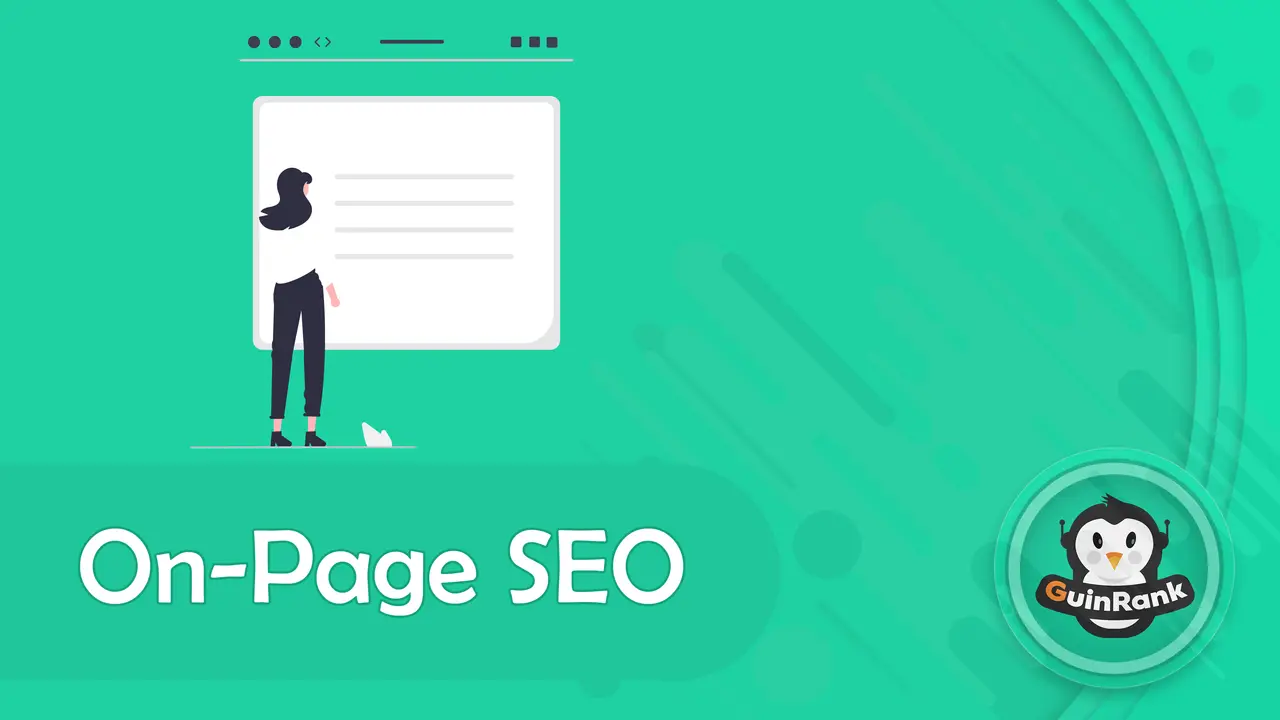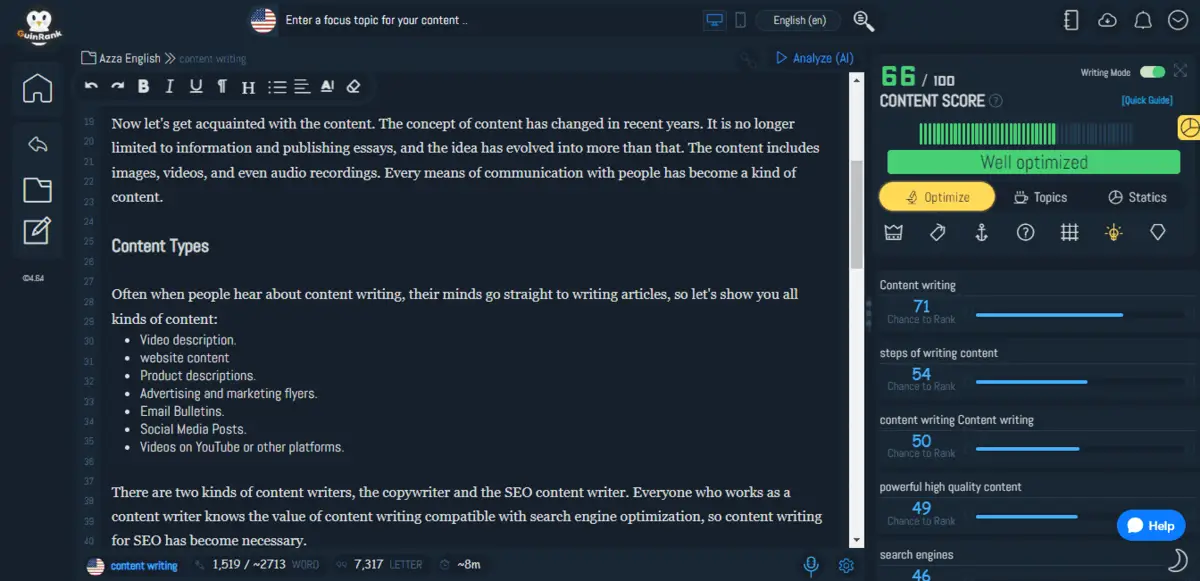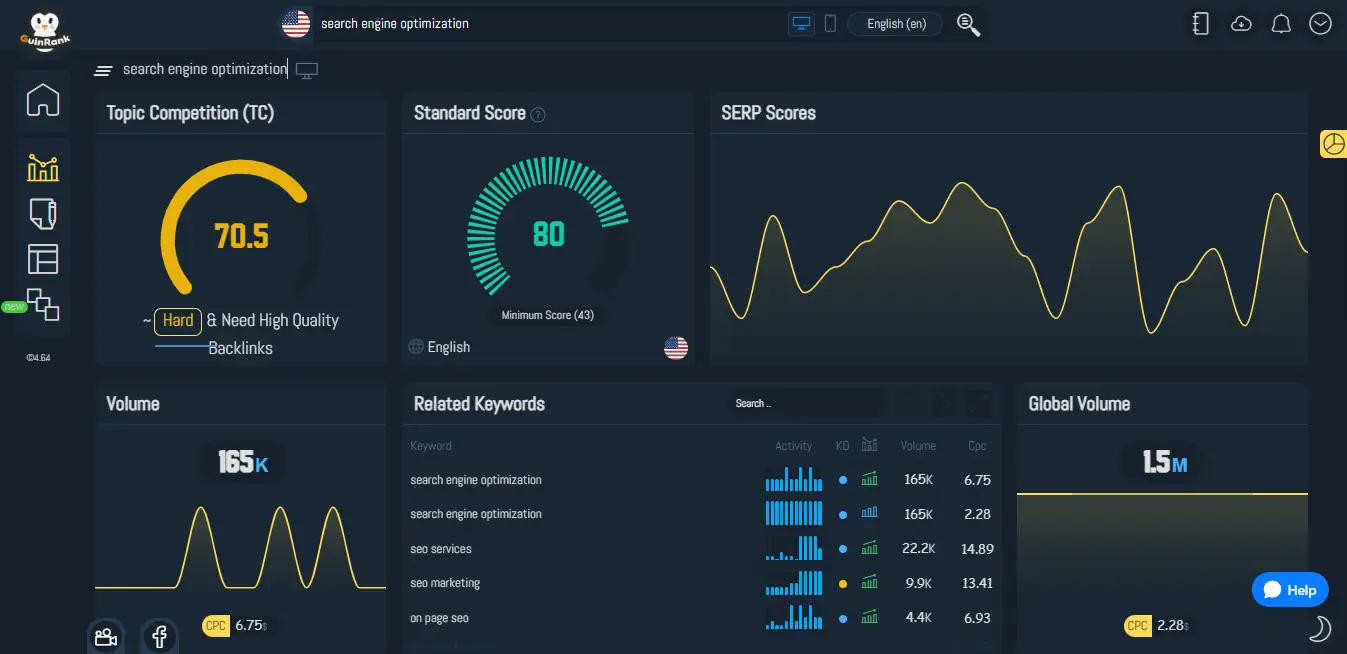
Are you wondering about the On-Page SEO for websites? Internal SEO refers to everything you can do within your website to improve your site's content and get better and higher rankings on search engines, especially google.
What is On-Page SEO?
On-page SEO is a set of practices that you can use to improve your web pages to rank higher in search engines, and these strategies such as how to use the right keyword, “keyword research,” and put it in the title and URL as well as optimizing images, internal and external links are important factors other.
Why is on-page SEO important?
On-page SEO improvement is vital as it is one of the essential parts of search engine optimization and is considered the most critical part. The SEO divided into three sections (on-page, off-page, and technical SEO). Examples of off-page optimization are building external links (backlinks) for technical optimization, such as maintaining a high page speed.
Internal SEO is the most critical stage, as when the user goes to Google and searches for a query, Google's algorithms search the existing results. Relevant to this search and questioning, and for your site to appear in search engine results, you need to improve the SEO of the internal site based on a specific content and keyword plan.
So the way you optimize your content has a far-reaching effect on how well your website ranks. On-page SEO is one of the most popular SEO methods for bringing organic traffic to your site, generating leads, and increasing sales.
On-page SEO overview
Here is a high-level overview of what we'll cover in the article:
- Your goal: is to optimize every page on your website to be easily found in search engines.
- The result: Your website pages and blog posts will become SEO friendly, and your site will rank highly in the SERP.
- Importance: On-page SEO is one of the three pillars of SEO (with off-page SEO and technical SEO); these elements help increase audience and, consequently, traffic). But remember, despite the significance of on-page SEO optimization, the quality of the content remains a preference to provide a great user experience and content that always serves the intent of the search.
- When: It is best to configure internal site SEO before publishing pages and blog posts. However, you can also do this if your website is already up and running but not yet optimized.
- Who does it: You can do it yourself or hire an SEO specialist, but with this guide, you can do it very quickly without hiring anyone.
- Optimization Tips: Don't forget to use GuinRank in keyword analysis and content writing to complete your perfect optimization strategy.
What is the search intent?
User intent, or search intent, is simply knowing why an individual used Google and did the search. Understanding the searcher's intent is essential for creating optimized content and donating to a better user experience.
Research intent falls under three types and objectives:
- Informational: A person searches for information about a topic.
- Transactional Transactions: Searches for people who intend to take action, such as buying anything, downloading a file, etc.
- Navigational: Here are searches for certain things, such as the name of a location or site.
Understanding the user's intent makes you select the right terms and target them correctly, aids you in the buyer journey, and allows you to create content to guide the user to each step. You can give the customer or visitor what they need by creating content that meets the intent of their research; it raises your chances of appearing in the first search results and the higher your organic conversions and visits.
How does Google understand user intent?
Behind every query is a person who wants Google to help them find something.
Google uses its own AI system, "Rank Brain," to understand a user's intent by noting the meaning of a query.
Let's take a practical example. When the user searches for the query "golf," is he looking for information about golf or the famous Volkswagen car? Based on the word "golf" alone, it is impossible to decide exactly what the user is referring to, in which case Google uses the queries he has made Previously used to exhibit relevant results for him.
Pre-improving internal SEO
Before page SEO optimization, you must have done keyword research for your site, prepared a content plan ( content strategy)for the website, and selected a target term for each site page. Then write the content of the target word without worrying about the search algorithms until you are sure you are creating high-quality content that provides a different user experience, taking the internal improvement stages as we explain in the following lines.
How to write high-quality content?
Your content must be (clear, valuable, exclusive, and relevant to search) to rank highly on Google, and it is possible to write useful, complete, relevant content. Still, it is not straightforward and difficult to understand, so the user will not want to read it.
So you have to keep these tips when writing content:
- Type without spelling or grammatical errors.
- For each paragraph or two, use a subtitle subheading.
- Think of the reader first, be direct, and use an attractive writing style.
- Use photos that add value to the post and encourage the visitor to read the text.
- Write simple and small paragraphs. Large paragraphs discourage the reader from continuing to read.
- Use examples to illustrate the meaning and storytelling to engage the reader.
- Use the inverted pyramid method, writing the most important first, then the essential, and finally the additional information.
You may be asking what the benefits of using an inverted pyramid structure are? Let me tell you that its advantages are many; keep in mind that the reader may decide within seconds of seeing the article whether to continue reading it or not, so we advise you to follow this process, as it helps them understand the content of the article quickly, and they do not resort to another webpage.
Also, artificial intelligence algorithms rely heavily on reading the intro to the article and identifying the target keyword through it.
The importance of content is no longer limited to blogs but is used in the marketing technique. Many companies' websites have extended in all fields. They are utilizing SEO and content in marketing their products (digital marketing) and earning traffic and attracting customers, so you should work on the Understandable industry content for search engines and take care of the internal and external SEO of the store or blog to reach the first pages of search results.
Content Optimization Tool

When talking about content, we have to mention the Content Optimization tool "GuinRank," as it helps you write SEO-friendly content. It has a group of tools that analyze keywords and content of competitors and give you all the data needed to outperform them.
What are the factors to improve internal SEO?
After you've created your keyword plan, understood your search intent, and made exclusive content that Google and search engine users will love, you've already passed the hard part, and it's time to have fun. On-page SEO optimization is the most fun part of it, and these factors are including this checklist:
- Add the keyword in the title.
- Put the research keyword in the URL.
- Improve your title tag.
- Use the keyword in the introduction.
- Write an improved meta description for the article.
- Use target keywords in subheadings.
- Optimizing the images used in the article
- It is improving internal links.
1.add the keyword in the title
It means the H1 tag and is used to write the title pages. You must put The word in the title to tell search engines and users about the page's subject.
It has some benchmarks, the most important of which is the number of title characters. Google displays the first 60 characters only, so try to stick to the number of characters as much as possible, and do not create inappropriate fake titles, but try to be short and meaningful titles that attract the researcher to click on the page to visit it.
Also, avoid overfilling the title with too many keywords, as these are techniques that Google does not like and are unsuitable for optimization.
2.put a main keyword in the URL
Do you know that some users are afraid of long and indecipherable URLs? So include the keyword in the page link directly, and continually work to create a short and understandable URL for your content page to make it easier for the visitor to understand the page's topic.
3.Improve your title tag
The title is one of the most vital factors for improving the site, the title is the pinpoint of contact between the visitor and the site on the search results page, and the more links and tags of articles are improved and attractive, the more this donates to encouraging the user to click on it and visit your site, which helps increase the click-through rate (ctr) and earn natural visits to a website.
Here are the points to keep in mind when creating a web page address:
- The title should not overextend 60 characters.
- You should optimize The title for the user to get them to click on it.
- Contain the keyword in it, preferably at the beginning of the title.
4.Use the keyword in the introduction.
Although this method is one of the old SEO practices, it is effective, and GuinRank users know this. Putting the target keyword in the first 100 words helps artificial intelligence (AI) to understand the topic you are dealing with. As we know, Google uses artificial intelligence techniques in its search algorithms. With it, in this article, we target the word-internal SEO. When analyzing the article, ai may recognize the word as the first word, indicating that we could explain the topic in an understandable way to Google and intelligence.

If you want to get the most important keywords for your site, you can check out this article.
5.Write an improved meta description for the article.
The meta description is an HTML tag with a certain number of characters and aims to introduce the reader or researcher to the brief content of the web page in the search results. So it is one of the essential characteristics for on-page SEO, such as the title; in formulating a distinctive description that will attract the reader to click on the page, it is a means Good for gaining clicks from search engines, make sure you write it carefully and professionally.
Google doesn't consider meta descriptions a ranking factor. Still, they can increase your organic click-through rate (CTR), prioritizing search results.
Here are some tips for creating a great description:
- Add here unless you can add it with the title.
- Write in the meta description what helps the intent of the search.
- Use a conversational tone and send a direct message to the user.
- Do not exceed 160 characters recommended by Google, and try to add keywords associated with the word.
6.Use primary keywords in sub-headings.
Remember to add your keyword in the subheadings, putting the keyword in the titles (H2 and H3) of your articles.
7.Optimizing the images used in the article
Optimized images can obtain more traffic to your site, donating to Google's understanding of your content, especially if it's exclusive images, which gives you a more significant advantage. Now, do you know how to create SEO and search engine-friendly images? Let us tell you that you should take care of the following:
- Image title: Make sure to add a title to the image that includes your keyword; you can use a dash to separate the words.
- Image alt text: To understand what an image is about, Google uses alt text with the page's content. Try making information-rich photos that include the keyword and are within the context of the page's content.
- Image compression: Image compression is used to reduce file sizes, load the page faster, and enhances the user experience, and know that page speed is one of the most important ranking factors for Google, you can use compression programs such as Short Pixel.
When you do these things, you are providing optimized images that contribute to the optimization and optimization of the internal site SEO.
8.Improve internal links
Internal linking improves the website's SEO, as it helps the user navigate the site by guiding him to the content and pages related to the content he reads.
The site's internal linking strategy speeds up the indexing operation of pages and makes it easier to crawl new pages when linked to older related pages.
Internal linking best practices:
- Always use anchor text that contains the keyword. These texts help Google and readers understand the page you are linking to.
- Add internal links at the top of the page to enhance on-page SEO. This is helpful for SEO because Google follows your readers' time on your site. If Google notices your readers are scrolling through your content, they will move your results by a few points.
- Add internal linking to articles that need increased traffic within the leading articles to bring traffic to them.
These were the basics of preparing internal SEO for websites. Still, there are a set of advanced activities and components used to complete the optimization process, which is as follows:
The featured snippet is a search result that Google rewards you with when creating premium content. You place your content in a box as the first result on the search results page, which is like the image below.
But do you know what the featured Google snippet includes?
Let me tell you, inside the snippet box, and you will find the following:
- Website and image link
- YouTube video
- Bulleted or numeric list
- Question and answer
Do you want to win a featured snippet? Here are some tips for appearing in the featured snippet box in Google:
- Always within the questions that interest users within the content.
- Try to answer the question by giving an added value to the user that distinguishes you from the rest of the pages, such as adding new information or personal experience.
- Always make your first paragraph full of valuable and helpful information and explain it in detail in the following sections.
What is the Difference between On-page and Off-page SEO
Internal SEO (On-Page SEO) aims to improve everything on the site under your control (such as content, images, meta tags, internal links...)
As for the external SEO (Off-page SEO), it is related to the improvement of the external factors that help raise the ranking of the site, such as (working backlinks, publishing on social media, ....)
Both are important to the success of SEO strategy and complement each other.
We explained the steps to practice On-Page SEO. Follow these methods with Off-page SEO and technical SEO in order to help Google and search engines understand the site's content, increase its ranking, raise its domain authority and get a high ranking in search results. And don't forget to analyze your target phrase and write your content on the GuinRank tool.
Now, I want to know if you found this guide on the on-page SEO helpful process or not?
- Share
- Facebook
- Twitter
- Pinterest
- Email
- Statistics
- Seen : 3202
- View : 25
- Amp : 3223
- Tags
- Comments
- Disqus
COMPANY & LEGAL
Information
Contact Us
- 65i North Broad Street, Suite 206, Middletown, Delaware (DE)
- support@guinrank.com
